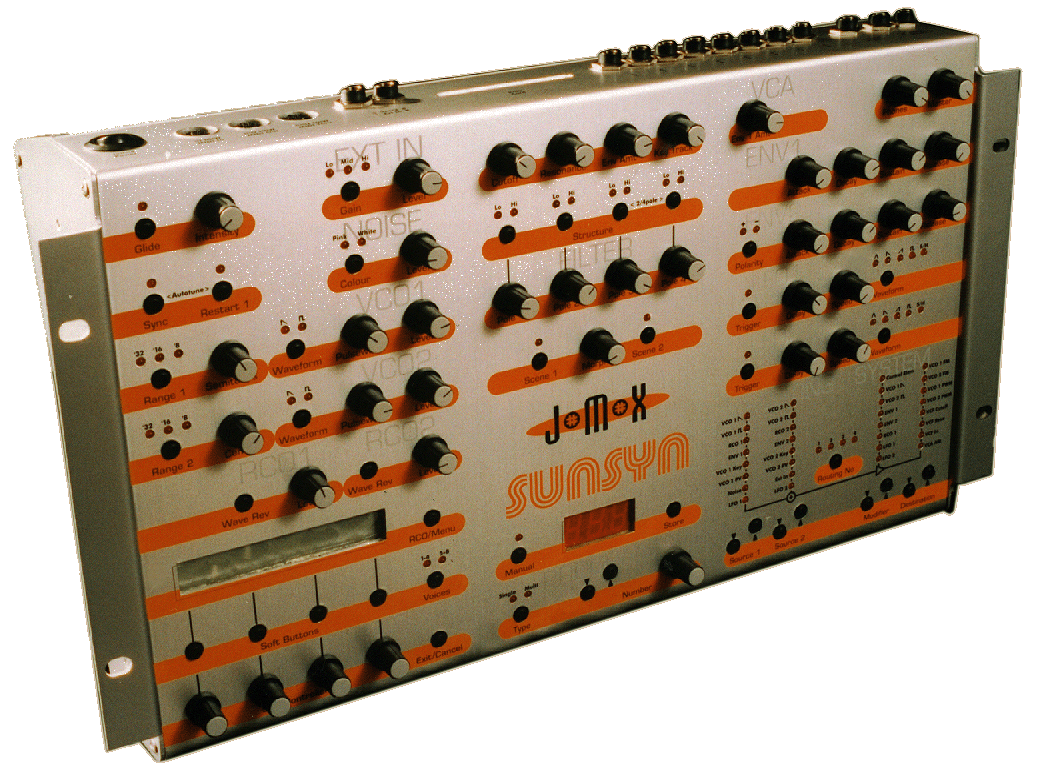Posted: Thu Feb 26, 2009 4:08 pm
Apparently something like this has been discussed here, but I can't locate the origin.
Either way, here's my two cents, as rambling as they may be....
How about the "Moog Slice?"
A thin 4 voice analog unit that sits under a Voyager with the same footprint.
Just power in, audio out, Midi in and a volume control.
An update to the Voyager's OS to allow it to control the slice's functionality.
Sort of like "page 2" on an OB-8.
(I fear there's not enough room in the Vger's memory for this, but I can dream...)
Additional slices could be purchased and stacked to expand polyphony.
The downside is that it would share the Vger's keyboard and control, but everything would still be functional in real time via MIDI.
The upside is that Vger owners could achieve polyphonic analog Moog sweetness at a fraction of the price of a full polyphonic synth.
A $10K polyphonic would be a financial boat anchor in my opinion.
It couldn't create enough buzz or sales.
Retailers couldn't afford to purchase stock.
Moog would be forced into a drop-ship scenario or have to provide flooring (stock under credit) provisions.
This alone would cause more friction between Ebay retailers and storefront locations.
If a retailer could afford to purchase one outright, it would likely become a floor demo unit where a much larger ratio of players vs buyers would degrade the condition of their sole instrument.
If Moog made a high priced polysynth today, the most immediate reaction would be people citing the price and what else is available instead.
They'd have options.
I would imagine the sales for the Moog guitar are few and often difficult to make.
But it's not a polysynth.
As a niche instrument, there's nothing comparable on the market.
It's a take it or leave it proposition.
Make a pricey polysynth today and you're begging for trouble.
There's too much out there already to justify the cost of production.
Roland, Korg and Yamaha have remained viable companies because their business models revolve around having wide lines of lower priced instruments.
The money comes from volume sales, not high profit margins per individual sale.
Either way, here's my two cents, as rambling as they may be....
How about the "Moog Slice?"
A thin 4 voice analog unit that sits under a Voyager with the same footprint.
Just power in, audio out, Midi in and a volume control.
An update to the Voyager's OS to allow it to control the slice's functionality.
Sort of like "page 2" on an OB-8.
(I fear there's not enough room in the Vger's memory for this, but I can dream...)
Additional slices could be purchased and stacked to expand polyphony.
The downside is that it would share the Vger's keyboard and control, but everything would still be functional in real time via MIDI.
The upside is that Vger owners could achieve polyphonic analog Moog sweetness at a fraction of the price of a full polyphonic synth.
A $10K polyphonic would be a financial boat anchor in my opinion.
It couldn't create enough buzz or sales.
Retailers couldn't afford to purchase stock.
Moog would be forced into a drop-ship scenario or have to provide flooring (stock under credit) provisions.
This alone would cause more friction between Ebay retailers and storefront locations.
If a retailer could afford to purchase one outright, it would likely become a floor demo unit where a much larger ratio of players vs buyers would degrade the condition of their sole instrument.
If Moog made a high priced polysynth today, the most immediate reaction would be people citing the price and what else is available instead.
They'd have options.
I would imagine the sales for the Moog guitar are few and often difficult to make.
But it's not a polysynth.
As a niche instrument, there's nothing comparable on the market.
It's a take it or leave it proposition.
Make a pricey polysynth today and you're begging for trouble.
There's too much out there already to justify the cost of production.
Roland, Korg and Yamaha have remained viable companies because their business models revolve around having wide lines of lower priced instruments.
The money comes from volume sales, not high profit margins per individual sale.

